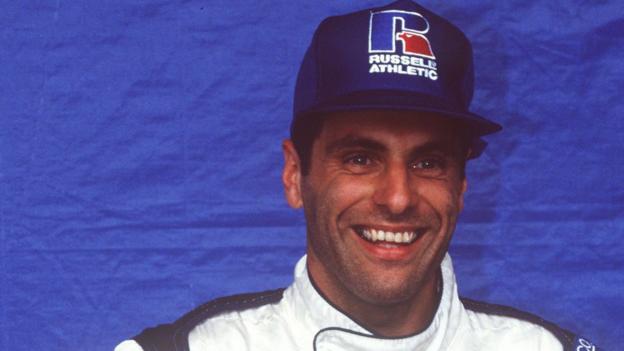
For David Brabham, Roland Ratzenberger is not the forgotten man of Imola.
His former team-mate died on this day 26 years ago, 24 hours before the sport lost one of its greatest drivers, Ayrton Senna.
The events of that horrific weekend at the San Marino Grand Prix have been retold countless times since, but with the focus on the three-time world champion.
Here Brabham remembers the last moments of his friend, the effervescent rookie Ratzenberger.
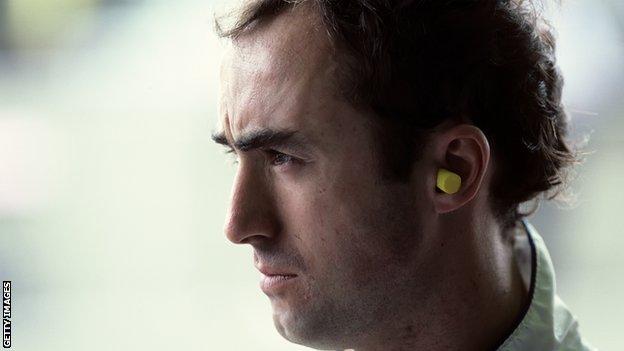
‘Ideal racing driver’
Ratzenberger had signed a deal with the small Oxfordshire-based team at the start of the 1994 season, and in doing so realised a lifelong dream to compete in Formula 1.
“He didn’t have it easy,” said Brabham, son of three-time world champion Sir Jack. “Roland had no real help in terms of racing from his parents – his dad didn’t approve – so he went off on his own.”
The Austrian raced in touring cars, Formula 3000 and Le Mans 24 Hours, before he got the chance for the Simtek team after impressing owner and passenger Nick Wirth on a thrilling drive through Banbury in a Ford Fiesta.
“That story about him and Nick wouldn’t surprise me. Roland would have done anything to get a seat,” added Brabham.
“I’m glad we’d signed him. For me he was the ideal racing driver – he was fit, good-looking and had a great smile. He was fast in the car and understood the car. He was a real asset for us as a team.”
But the Simtek car was uncompetitive, as the new team tried to find its feet at motorsport’s top table. After failing to qualify for the 1994 opener in Brazil, Ratzenberger finished a commendable 11th at the Pacific Grand Prix in Japan – a race that had 15 retirements.
“I qualified for Brazil, but he didn’t, but then we both made Japan,” said the 54-year-old Brabham.
“We were talking about that race – he managed a finish. That was a big effort for a new team. Both of us were looking forward to the European races.”
Brabham had more experience in the sport. He was asked by Ratzenberger at Imola to test his car’s carbon brakes, which the Austrian had complained about. Once that issue was resolved, the Australian said his team-mate felt a lot better and was confident of braking. Unfortunately for Ratzenberger, it was another car part that was the cause of his fatal accident on the Saturday.
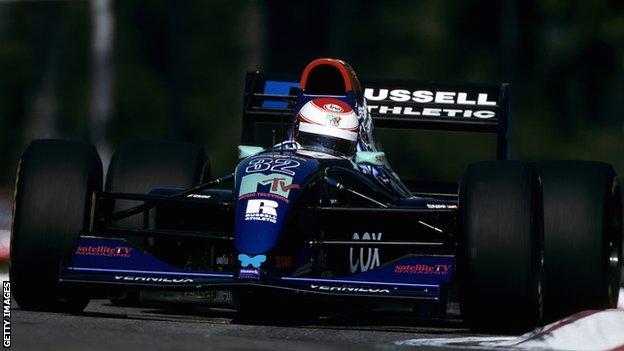
‘I looked and immediately knew he was gone’
Earlier in the qualifying session, the Austrian’s front wing had been damaged; it later broke and became lodged under his car. Unable to control the Simtek, he crashed into the concrete wall at the Villeneuve corner.
“I can’t remember how long into the session it was,” Brabham said.
“We had done some qualifying runs. I came round Tamburello [curve] and the red flag had come out – actually I think they were yellows at first. I slowed down.
“He’d finished up at the middle of the corner – we ended up going around the outside of the car. When I saw the bits first and saw where the car ended up, I was concerned – that was the fastest part of the circuit. You’re doing 300-something kilometres an hour. I looked and immediately thought he was gone – his head position, his visor was up.
“You thought: ‘What doesn’t look good’ – then your brain goes into protection mode or something. The next thought I had was I had to get back to the pits to keep the tyres warm which is the most ridiculous thing to think about, but that’s what I thought about.”
Brabham returned to the Simtek team in the paddock, where his wife, pregnant with their first child, was waiting for him.
“She asked: ‘What do you think?’ I just told her that I didn’t see life in the car and that he was gone, although I hoped I was wrong. A little while afterwards, that was unfortunately confirmed.”
Ratzenberger died on arrival at the nearby Maggiore di Bologna hospital. He was only 33. It was later confirmed the Austrian suffered several injuries, including a skull fracture.
“I don’t remember much of the rest of the day,” continued Brabham. “We put the shutter down in the garage and we walked back. There weren’t a lot of people talking. Everyone was in a state of shock. Nobody could comprehend what had happened.”
Following a meeting that evening and warm-up in his car, Brabham and the team decided to compete on Sunday.
“I did notice when I came into the pits that this incredibly dark cloud heaviness surrounding the team had shifted ever so slightly,” he said. “I thought I have to pick this team up and continue what we’re doing. I decided to race, really for the guys.”
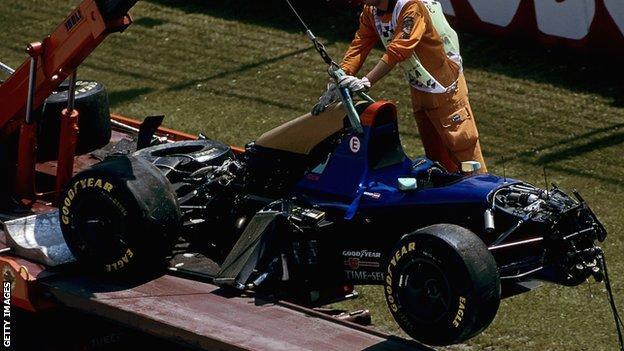
‘That’s when the whole weekend hit me’
The race itself began with a crash on the grid when Pedro Lamy’s Lotus went spinning off the track after it smashed into the back of JJ Lehto’s stationary Benetton. A safety car was deployed before the racing resumed on lap six. That was the third major accident of the weekend following Ratzenberger and Rubens Barrichello, who suffered a broken nose and arm when his Jordan careered into the Variante Bassa corner at 140mph.
Moments after the restart, the red flag came out again.
“The cars stop once more and you just think: ‘Oh no, not again,'” he recalled. “You then realise it’s Senna.”
“I don’t think I got word that he passed away until that evening when I turned on Teletext. That’s when the whole weekend hit me and I burst into tears.”
Safety measures were introduced immediately for the following race in Monaco, while in the months and years that followed other changes were made, including stronger helmets, a head and neck support device and a redesign of the cars’ cockpits. Tracks were also tweaked, with some made slower, run-offs larger and new barriers added.
Jules Bianchi’s death in 2015 following his accident at the 2014 Japanese Grand Prix, has been the only fatality in the sport since Senna.
“There’s no doubt the changes have saved the lives of many drivers,” added Brabham.
“There are lots of pros, but the changes to the tracks means some have lost their character. Also the fear and respect for the track from drivers’ has changed – I feel that with the young drivers I’ve worked with.
“If their cars go off then they can keep going – there’s no penalty for a mistake, in that sense.”
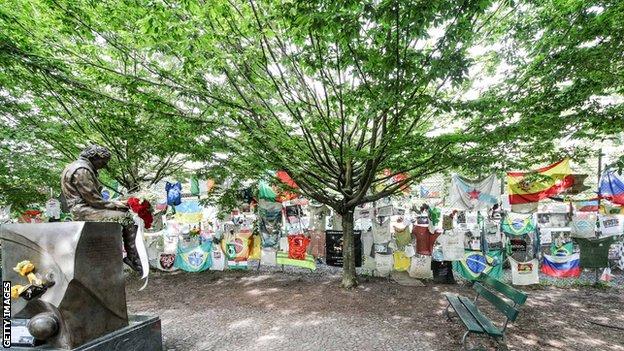
‘He had a smile on his face that day’
Some see Ratzenberger as the ‘forgotten man’ of that tragic weekend, but the Australian disagrees.
“There’s looking at it that way or the other way, which I prefer,” said Brabham.
“Would we still be talking about Roland 20 years on if only he had died? The fact it happened on the same weekend as Senna means he will always be remembered.”
Brabham said a visit to Imola had awoken the memories of that race and of his team-mate – painful, but also positive.
“There was no bad bone in him. He was very charming and had a fun side – everyone liked him,” he added.
“Roland probably died happy because he was in Formula 1 – he had a smile on his face that day and that is the last memory I have of him.”
